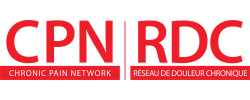| Return |
GP Evidence Summary

In people who have chest pain without a known cause, cognitive–behavioural therapy reduces pain in the short-term
This Evidence Summary is based on the following systematic review:
Kisely SR, Campbell LA, Yelland MJ, et al. Psychological interventions for symptomatic management of non-specific chest pain in patients with normal coronary anatomy. Cochrane Database Syst Rev. 2015;6:CD004101.
Review questions
In people who have chest pain without a known cause and without evidence of coronary artery disease, do psychological treatments reduce symptoms?
Background
Chest pain is not always caused by heart problems. It can be caused by other conditions such as arthritis (e.g., of the rib cage) or problems with the lungs, esophagus, or stomach. In some people, cardiac tests (including blood tests, electrocardiogram [EKG], stress test, angiogram, and others) are negative, and the cause of chest pain remains unknown.
Treatment for chest pain depends on the cause. In people who have chest pain without a known cause, psychological treatments, such as cognitive–behavioural therapy, may help reduce the frequency and severity of chest pain.
How the review was done
The reviewers did a systematic review, searching for studies that were published up to May 2014. They found 17 randomized controlled trials with 1,006 people.
The key features of the trials were:
- people were treated as outpatients after having chest pain without a known cause despite testing;
- people who were taking drugs for a psychiatric condition were excluded;
- most studies treated people with cognitive–behavioural therapy; other treatments included relaxation therapy, hypnotherapy, coping skills training, guided breathing, and group support;
- treatment was compared with usual care, placebo, or no treatment; and
- people were followed for between 3 months and 3 years.
What the researchers found
Compared with usual care, placebo, or no treatment, psychological treatment (mainly cognitive–behavioural therapy):
- reduced chest pain up to 3 months and at 3 to 12 months;
- reduced frequency of chest pain up to 3 months but not between 3 and 12 months;
- had similar effects for reducing chest pain severity up to 3 months;
- improved quality of life at 3 to 12 months but not before 3 months; and
- improved some psychological symptoms up to 3 months but not at 3 to 12 months.
Conclusions
In people who have chest pain without a known cause, cognitive–behavioural therapy reduced chest pain and chest pain frequency for up to 3 months. There wasn’t enough evidence to know if other psychological treatments reduce chest pain.
Psychological treatments* vs control† in people with chest pain without a known cardiac cause
Outcomes‡ | Number of trials (number of people) | Rate of events with treatment | Rate of events with control | Absolute effect of treatment |
|---|---|---|---|---|
| People with any chest pain up to 3 months | 3 (172) | 64% | 93% | About 29 fewer people out of 100 had chest pain (from as few as 10 to as many as 47 out of 100) |
| People with any chest pain at 3 to 12 months | 2 (111) | 54% | 93% | About 39 fewer patients out of 100 had chest pain (from as few as 24 to as many as 54 out of 100) |
| Chest pain frequency at 3 months | 7 (294) | _ | _ | Psychological treatment reduced chest pain frequency |
| Quality of life (physical functioning) at 3 to 12 months | 4 (192) | _ | _ | Psychological treatment improved quality of life |
| Quality of life (social functioning) at 3 to 12 months | 4 (173) | _ | _ | Psychological treatment improved quality of life |
| Anxiety at 3 months | 8 (383) | _ | _ | Psychological treatment reduced anxiety |
*Cognitive–behavioural therapy was used in most studies.
†Control was usual care, placebo, or no treatment.
‡No difference in effect between psychological treatments and control at 3 months for chest pain severity, quality of life, or depression; and at 3 to 12 months for chest pain frequency or psychological symptoms.
This Evidence Summary was originally prepared for the McMaster Optimal Aging Portal.
Published: Friday, July 28, 2017
Please note that the information contained herein is not to be interpreted as an alternative to medical advice from a professional healthcare provider. If you have any questions about any medical matter, you should consult your professional healthcare providers, and should never delay seeking medical advice, disregard medical advice or discontinue medication based on information provided here.
|
This Evidence Summary was printed from the PAIN+ CPN website on 2026/01/04. To view other Evidence Summaries or to register to receive email notifications about new Evidence Summaries, please visit us at https://www.painpluscpn.ca/Articles/EvidenceSummaries |

|






 , McMaster University
, McMaster University